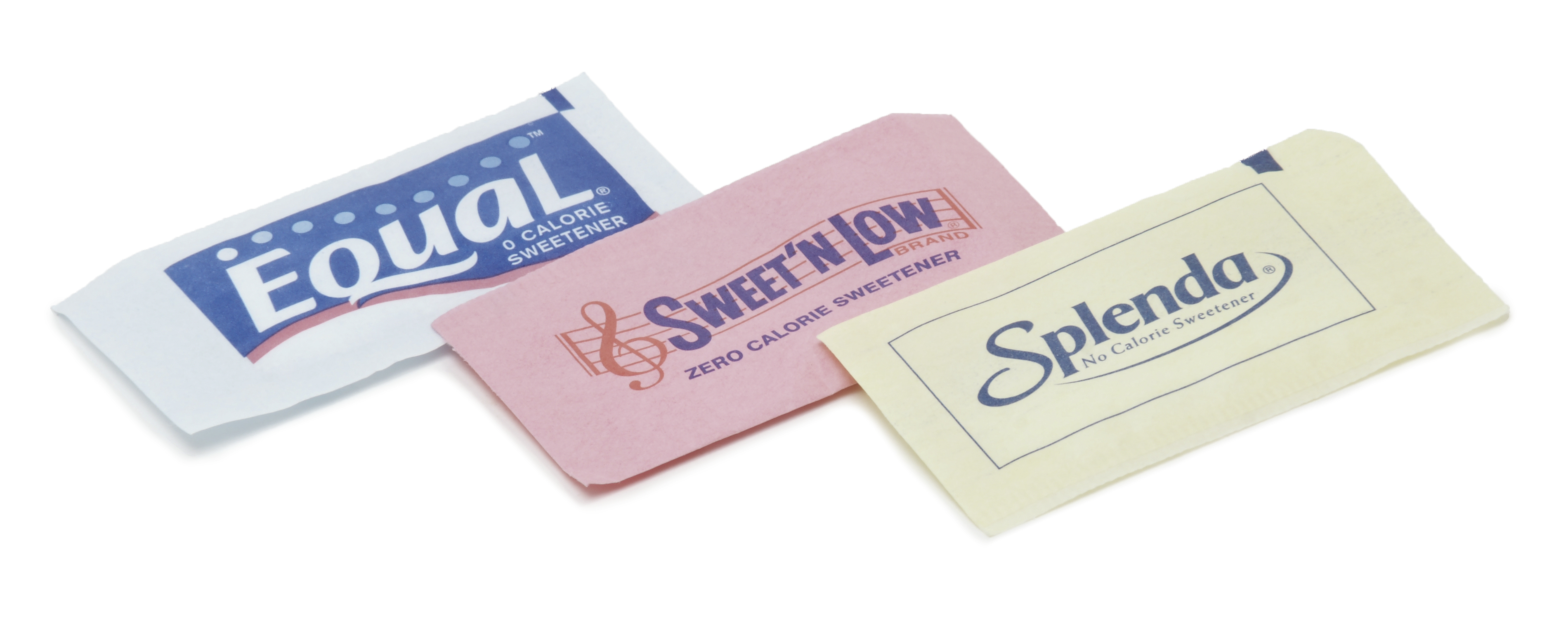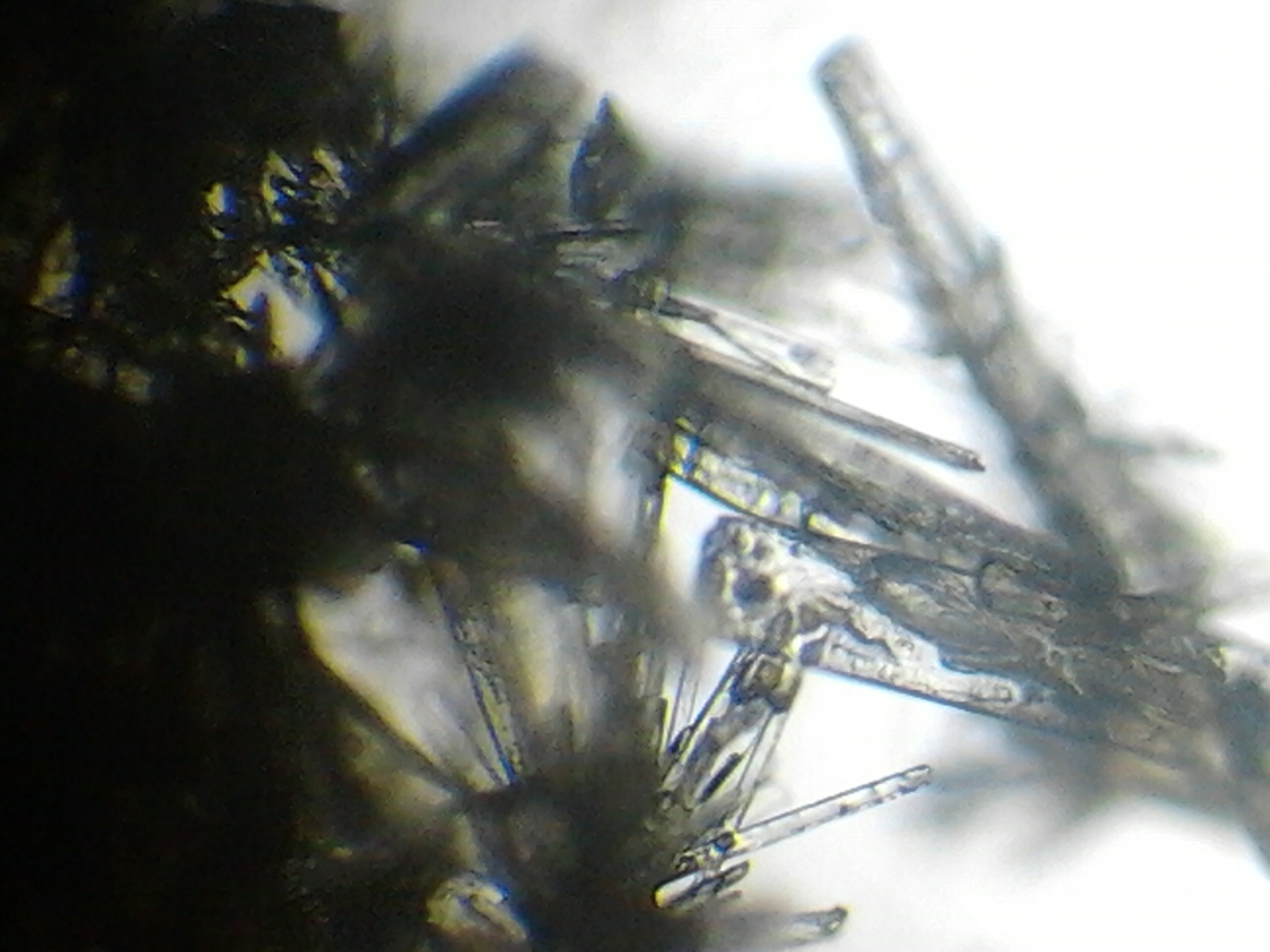|
Advantame
Advantame is a non-caloric artificial sweetener and aspartame analog by Ajinomoto. By mass, it is about 20 000 times sweeter than sucrose and about 110 times sweeter than aspartame. It has no notable off-flavors when compared to sucrose and tastes sweet a bit longer than aspartame and is chemically more stable. It can be blended with many other natural and artificial sweeteners.Nabors 2012, p. 31–44 Advantame can be used as a table top sweetener and in certain bubblegums, flavored drinks, milk products, jams and confectionery among other things. In 2013, it was approved for use in foods within EU with the E number E969. In 2014, FDA approved advantame as a non-nutritive sweetener and flavor enhancer within United States in foods generally, except meat and poultry. Safety The FDA acceptable daily intake of advantame for humans is 32.8 mg per kg of bodyweight (mg/kg bw), while according to EFSA it is 5 mg per kg of bodyweight (mg/kg bw). Estimated possible d ... [...More Info...] [...Related Items...] OR: [Wikipedia] [Google] [Baidu] |
Artificial Sweetener
A sugar substitute is a food additive that provides a sweetness like that of sugar while containing significantly less food energy than sugar-based sweeteners, making it a zero-calorie () or low-calorie sweetener. Artificial sweeteners may be derived through manufacturing of plant extracts or processed by chemical synthesis. Sugar substitute products are commercially available in various forms, such as small pills, powders, and packets. In North America, common sugar substitutes include aspartame, monk fruit extract, saccharin, sucralose, and stevia; cyclamate is also used outside the United States. These sweeteners are a fundamental ingredient in diet drinks to sweeten them without adding calories. Additionally, sugar alcohols such as erythritol, xylitol, and sorbitol are derived from sugars. Approved artificial sweeteners do not cause cancer. Reviews and dietetic professionals have concluded that moderate use of non-nutritive sweeteners as a safe replacement for sugars can ... [...More Info...] [...Related Items...] OR: [Wikipedia] [Google] [Baidu] |
Ajinomoto
is a Japanese multinational food and biotechnology corporation which produces seasonings, interlayer insulating materials for semiconductor packages for use in personal computers, cooking oils, frozen foods, beverages, sweeteners, amino acids, and pharmaceuticals. is the trade name for the company's original monosodium glutamate (MSG) product, the first of its kind, since 1909. The corporation's head office is located in Chūō, Tokyo. , Ajinomoto operates in 36 countries and employs an estimated 33,651 people. Its yearly revenue in 2021 is around ¥1.1 trillion JPY or $8 billion USD. History 1907–1944: Origins and expansion Ajinomoto Co., Inc. was created in 1908 as a subsidiary of Suzuki Pharmaceutical Co., Ltd., which was founded in May 1907 by Saburosuke Suzuki II and Kikunae Ikeda. Ajinomoto was created to let Ikeda, a professor at Tokyo Imperial University, sell monosodium glutamate (MSG) seasoning made from wheat that he invented and patented. He created the seasoning ... [...More Info...] [...Related Items...] OR: [Wikipedia] [Google] [Baidu] |
E Number
E numbers ("E" stands for "Europe") are codes for substances used as food additives, including those found naturally in many foods such as vitamin C, for use within the European Union (EU) and European Free Trade Association (EFTA). Commonly found on food labels, their safety assessment and approval are the responsibility of the European Food Safety Authority (EFSA). The fact that an additive has an E number implies that its use was at one time permitted in products for sale in the European Single Market; some of these additives are no longer allowed today. Having a single unified list for food additives was first agreed upon in 1962 with food colouring. In 1964, the directives for preservatives were added, in 1970 antioxidants were added, in 1974 emulsifiers, stabilisers, thickeners and gelling agents were added as well. Numbering schemes The numbering scheme follows that of the International Numbering System (INS) as determined by the '' Codex Alimentarius'' committee, t ... [...More Info...] [...Related Items...] OR: [Wikipedia] [Google] [Baidu] |
Center For Science In The Public Interest
The Center for Science in the Public Interest (CSPI) is a Washington, D.C.-based non-profit watchdog and consumer advocacy group that advocates for safer and healthier foods. History and funding CSPI is a consumer advocacy organization. Its focus is nutrition and health, food safety, and alcohol policy. CSPI was headed by the microbiologist Michael F. Jacobson, who founded the group in 1971 along with the meteorologist James Sullivan and the chemist Albert Fritsch, two fellow scientists from Ralph Nader's Center for the Study of Responsive Law. In the early days, CSPI focused on various aspects such as nutrition, environmental issues, and nuclear energy. However, after the 1977 departure of Fritsch and Sullivan, CSPI began to focus largely on nutrition and food safety and began publishing nutritional analyses and critiques. CSPI has 501(c)(3) status. Its chief source of income is its ''Nutrition Action Healthletter'', which has about 900,000 subscribers and does not accept ad ... [...More Info...] [...Related Items...] OR: [Wikipedia] [Google] [Baidu] |
Platinum On Carbon
Platinum on carbon, often referred to as Pt/C, is a form of platinum used as a catalyst. The metal is supported on activated carbon in order to maximize its surface area and activity. Uses Catalytic hydrogenation Platinum on carbon is used for catalytic hydrogenations in organic synthesis. Examples include carbonyl reduction, nitro compound reduction, secondary amine production via nitrile reduction, and the production of saturated heterocycles from their respective aromatic compound precursors. Preparation An aqueous solution of activated carbon and chloroplatinic acid is heated on a water bath for a few hours at 50°C, and after cooling, the solution is then made alkaline using sodium carbonate. The chloroplatinic acid is then reduced with hydrazine hydrate; however, this step is sometimes omitted in other preparations. After additional 2 hours of warming, the solution is filtered, washed with distilled water, and dried over calcium chloride to yield the catalyst. Platinum ... [...More Info...] [...Related Items...] OR: [Wikipedia] [Google] [Baidu] |
Palladium
Palladium is a chemical element with the symbol Pd and atomic number 46. It is a rare and lustrous silvery-white metal discovered in 1803 by the English chemist William Hyde Wollaston. He named it after the asteroid Pallas, which was itself named after the epithet of the Greek goddess Athena, acquired by her when she slew Pallas. Palladium, platinum, rhodium, ruthenium, iridium and osmium form a group of elements referred to as the platinum group metals (PGMs). They have similar chemical properties, but palladium has the lowest melting point and is the least dense of them. More than half the supply of palladium and its congener platinum is used in catalytic converters, which convert as much as 90% of the harmful gases in automobile exhaust (hydrocarbons, carbon monoxide, and nitrogen dioxide) into nontoxic substances (nitrogen, carbon dioxide and water vapor). Palladium is also used in electronics, dentistry, medicine, hydrogen purification, chemical applications, groundwate ... [...More Info...] [...Related Items...] OR: [Wikipedia] [Google] [Baidu] |
Hydrogenated
Hydrogenation is a chemical reaction between molecular hydrogen (H2) and another compound or element, usually in the presence of a catalyst such as nickel, palladium or platinum. The process is commonly employed to reduce or saturate organic compounds. Hydrogenation typically constitutes the addition of pairs of hydrogen atoms to a molecule, often an alkene. Catalysts are required for the reaction to be usable; non-catalytic hydrogenation takes place only at very high temperatures. Hydrogenation reduces double and triple bonds in hydrocarbons. Process Hydrogenation has three components, the unsaturated substrate, the hydrogen (or hydrogen source) and, invariably, a catalyst. The reduction reaction is carried out at different temperatures and pressures depending upon the substrate and the activity of the catalyst. Related or competing reactions The same catalysts and conditions that are used for hydrogenation reactions can also lead to isomerization of the alkenes from cis to ... [...More Info...] [...Related Items...] OR: [Wikipedia] [Google] [Baidu] |
Vanillin
Vanillin is an organic compound with the molecular formula . It is a phenolic aldehyde. Its functional groups include aldehyde, hydroxyl, and ether. It is the primary component of the extract of the vanilla bean. Synthetic vanillin is now used more often than natural vanilla extract as a flavoring in foods, beverages, and pharmaceuticals. Vanillin and ethylvanillin are used by the food industry; ethylvanillin is more expensive, but has a stronger note. It differs from vanillin by having an ethoxy group (−O−CH2CH3) instead of a methoxy group (−O−CH3). Natural vanilla extract is a mixture of several hundred different compounds in addition to vanillin. Artificial vanilla flavoring is often a solution of pure vanillin, usually of synthetic origin. Because of the scarcity and expense of natural vanilla extract, synthetic preparation of its predominant component has long been of interest. The first commercial synthesis of vanillin began with the more readily available na ... [...More Info...] [...Related Items...] OR: [Wikipedia] [Google] [Baidu] |
Stereoisomers
In stereochemistry, stereoisomerism, or spatial isomerism, is a form of isomerism in which molecules have the same molecular formula and sequence of bonded atoms (constitution), but differ in the three-dimensional orientations of their atoms in space. This contrasts with structural isomers, which share the same molecular formula, but the bond connections or their order differs. By definition, molecules that are stereoisomers of each other represent the same structural isomer. Enantiomers Enantiomers, also known as optical isomers, are two stereoisomers that are related to each other by a reflection: they are mirror images of each other that are non-superposable. Human hands are a macroscopic analog of this. Every stereogenic center in one has the opposite configuration in the other. Two compounds that are enantiomers of each other have the same physical properties, except for the direction in which they rotate polarized light and how they interact with different optical is ... [...More Info...] [...Related Items...] OR: [Wikipedia] [Google] [Baidu] |
Stereocenter
In stereochemistry, a stereocenter of a molecule is an atom (center), axis or plane that is the focus of stereoisomerism; that is, when having at least three different groups bound to the stereocenter, interchanging any two different groups creates a new stereoisomer. Stereocenters are also referred to as stereogenic centers. A stereocenter is geometrically defined as a point (location) in a molecule; a stereocenter is usually but not always a specific atom, often carbon. Stereocenters can exist on chiral or achiral molecules; stereocenters can contain single bonds or double bonds. The number of hypothetical stereoisomers can be predicted by using 2''n'', with ''n'' being the number of tetrahedral stereocenters; however, exceptions such as meso compounds can reduce the prediction to below the expected 2''n''. Chirality centers are a type of stereocenter with four different substituent groups; chirality centers are a specific subset of stereocenters because they can only ha ... [...More Info...] [...Related Items...] OR: [Wikipedia] [Google] [Baidu] |
Phyllodulcin
Phyllodulcin is a dihydroisocoumarin found in ''Hydrangea macrophylla'' and ''Hydrangea serrata''.Accumulation of phyllodulcin in sweet-leaf plants of Hydrangea serrata and its neutrality in the defence against a specialist leafmining herbivore. Mami Ujihara, Masateru Shinozaki and Makoto Kato, Researches on population ecology, Volume 37, Number 2, pp. 249–257, . It is a sweetener 400–800 times sweeter than sugar.Chemical and Functional Properties of Food Saccharides. P. Tomasik, CRC Press, Boca Raton, 2003, . See also * Amacha is a Japanese herbal tea made from fermented leaves of ''Hydrangea macrophylla'' var. ''thunbergii''. The name derives from the characters for and . Amacha means ''sweet tea''. This tea contains tannin and phyllodulcin, a sweetener 400–800 ti ... References External links * Dihydroisocoumarins Sugar substitutes Vanilloids {{aromatic-stub ... [...More Info...] [...Related Items...] OR: [Wikipedia] [Google] [Baidu] |


2.jpg)
